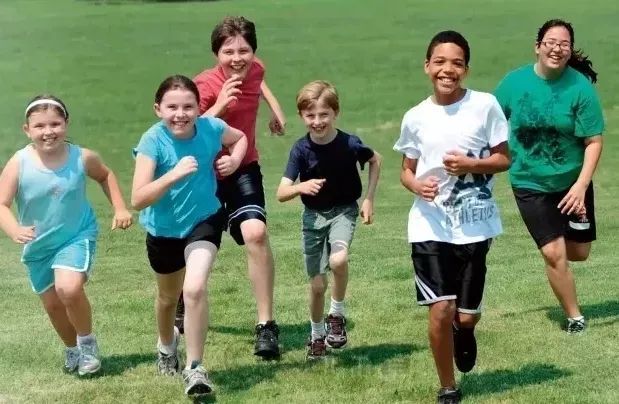What is fitness activities of youth?

Youth Fitness Exercise
According to the World Health Organization's new age grouping, the youth period refers to the age range of 18 to 44. In China, the youth period is generally defined as the age range of 18 to 35. This period is characterized by the peak physical strength in a person's life. During this phase, physical development has been completed, and the functions, capabilities, and physical fitness of various organ systems have reached their highest levels, providing the physical conditions necessary for engaging in various fitness exercises.
(I) Objectives of Youth Fitness Exercise
The youth period is a time of significant lifestyle changes and a transition towards independence and maturity. With changes in life circumstances such as education, employment, marriage, parenting, and career development, individuals experience substantial physical and psychological changes. To overcome various obstacles and pressures, engaging in fitness exercise is one of the most effective ways to improve physical and mental well-being during this stage.
Enhancing endurance and cardiorespiratory fitness, maintaining a desirable physique
During the youth period, the rate of height growth gradually slows down, and it generally stops around the age of 25 as skeletal development is completed. However, there is a rapid increase in muscle mass and body weight. The physiological development of youth tends to stabilize, and cardiovascular, digestive, and immune systems are at their optimal state. Parameters such as cardiac output and lung capacity reach their maximum values. Overall strength and general endurance show an increasing trend, while speed and agility can be maintained at a high level for a longer duration. The exercise goals during this period can be achieved through high-intensity and high-volume fitness exercises to promote physical health, enhance aerobic endurance and cardiorespiratory fitness, and maintain a desirable physique. For males, engaging in fitness exercise can further develop muscles, improve muscle quality, elasticity, physical strength, and enhance the functioning of internal organs, resulting in a strong, robust, and aesthetically pleasing body shape. For females, participating in fitness exercise can improve muscle quality, enhance muscle elasticity, physical strength, prevent fat accumulation, and result in a full, attractive, proportional, slim, and aesthetically pleasing body shape.
Alleviating psychological stress and enhancing mental resilience
During the youth period, there is significant psychological development, especially in emotional processes, where character traits become more defined, and intellectual development reaches its peak. However, individuals in this stage face a series of new developmental tasks, such as education, employment, partner selection, building a family, raising children, and pursuing a career. Coping with these demanding tasks presents a challenging test of adaptability, requiring individuals to possess the necessary physical and mental qualities. Therefore, another important objective of fitness exercise during this period is to alleviate psychological stress and enhance mental resilience to cope with the pressures and challenges arising from academic, professional, and personal aspects of life.
(II) Key Considerations for Youth Fitness Exercise
Control exercise intensity: It is important for youth to pay attention to controlling exercise intensity and not increase it arbitrarily during fitness exercise, even if they feel physically fit. This is particularly important when participating in high-intensity fitness activities (such as strength training, football matches, badminton matches) to prevent various exercise-related injuries. It is necessary to learn proper warm-up exercises before engaging in fitness exercises and to perform cool-down exercises afterward.
Understand the importance of fitness exercise: The youth period is when individuals are most prone to interrupting their fitness exercise routines. Therefore, it is crucial to further emphasize the importance of engaging in fitness exercise. Adjusting fitness exercise routines in a timely manner based on changes in personal circumstances is especially important. It is recommended to participate in various organized group fitness activities to gain support from peers.
Tailor exercise to individual needs: Youth should have a correct understanding of their own physical fitness level and engage in fitness exercises that are tailored to their lifestyle and work requirements. This will help further enhance physical abilities, especially in terms of strength, endurance levels, and flexibility.
Proper nutrition and rest: Youth should pay attention to proper nutritional supplementation after fitness exercises to meet the body's recovery needs. Adequate rest is also important to facilitate fatigue recovery, prevent fatigue from affecting work, studies, and daily life. Waking up the next day feeling refreshed and without fatigue is generally a good indicator.
(III) Selection of Fitness Exercise Programs for Youth
The youth period is an important stage in transitioning from school physical education to community-based sports. It is a crucial period for lifelong physical activity. In terms of activity modes, the transition should be made from organized group fitness exercises to individual-based exercises that focus on effectiveness. During the youth period, physical fitness is at its peak, and individuals possess the ability to handle high-intensity strength exercises, endurance activities, and flexibility exercises. The range of suitable exercise programs is vast.
Strength exercises:
This includes bodyweight exercises such as push-ups, sit-ups, pull-ups, planks, as well as weightlifting exercises using dumbbells and Barbells, such as bicep curls, bench press, leg extensions, elliptical machine workouts, etc.
Endurance exercises:
These include jogging, swimming, cycling, aerobics, and various ball sports such as table tennis, badminton, tennis, basketball, and soccer.
Flexibility and stretching exercises:
This includes radio gymnastics, tai chi, dance, yoga, and various stretching exercises.
Please indicate the address of this article for reprint https://www.sportshealthprogram.com/faq/202307629.html













